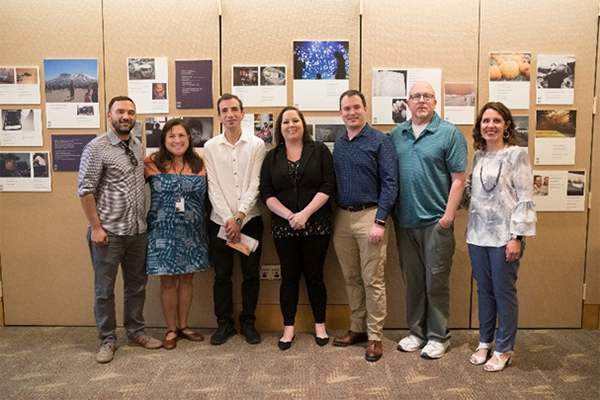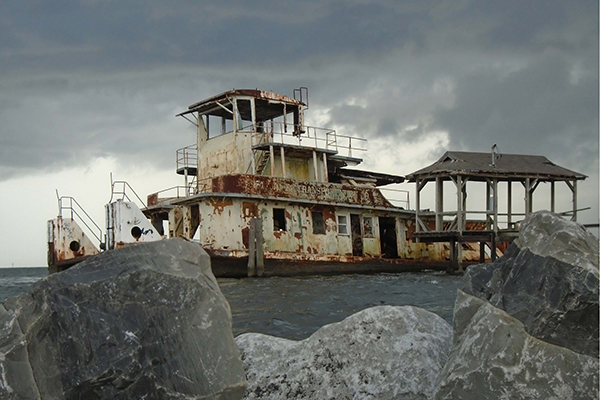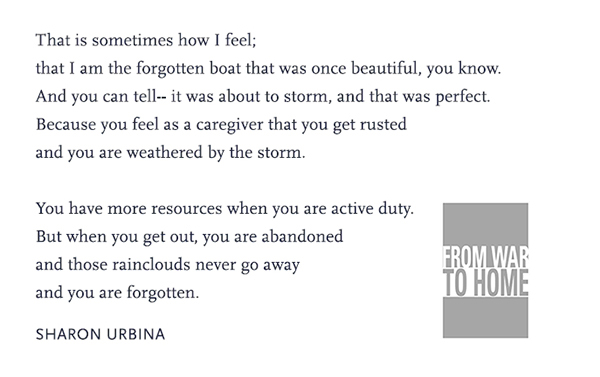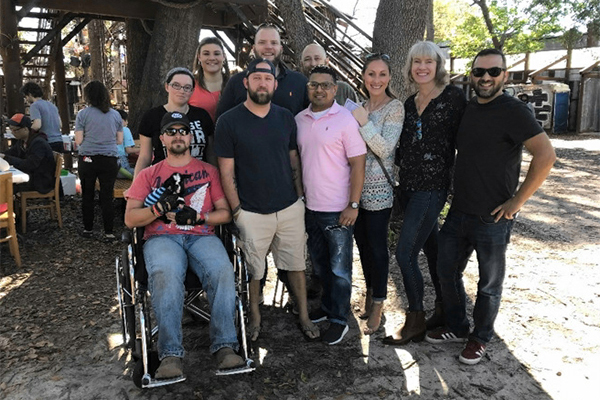 |
Photovoice: Improving Post-Deployment Reintegration through Visual StorytellingHSR&D’s monthly publication Veterans’ Perspectives highlights research conducted by HSR&D and/or QUERI investigators, showcasing the importance of research for Veterans – and the importance of Veterans for research. In the August 2019 Issue: |
IntroductionWhat is Photovoice?Photovoice is a research tool that allows individuals to convey their experiences through visual images and first-person narratives. Through it, Veterans have been able to increase health self-efficacy, while Veterans and caregivers have been able to advocate for needed services to VA leadership.Many researchers recognize it is no longer enough to share research findings solely through publishing in peer-reviewed journals. To make an impact, study findings must be communicated to diverse audiences—including patients, providers, and policymakers—in ways that resonate and engage. Veterans and their families have compelling and illustrative personal stories about the impact of health care policies and practices. Through participatory action research (PAR) and a multimedia methodology called Photovoice, a team of VA researchers, OEF/OIF Veterans, and military caregivers have collaborated to highlight Veteran and family perspectives on post-deployment VA care. Photovoice provides Veterans and their family caregivers opportunities to be partners and co-leads in dissemination of research findings by sharing their own stories and those of others in their communities. This collaboration has resulted in two traveling photo exhibits, a website, two self-published photobooks, and dozens of presentations and publications with Veterans and caregivers as co-presenters and co-authors. 
Veteran participant and research project manager Ray Facundo, MSW, with Dr. Ono (first and second from left), Veterans, and caregivers at the Portland exhibit. From War to Home: Two Photovoice Studies“When the VA opened the exhibit, it could not have been a better place to start building trust... It was not a highlight reel, but an honest self-reflection and gave a true sense they desired self-improvement.” - Lawrence Davidson, Veteran participant Through two HSR&D-funded studies, principal investigator Gala True, PhD, and her colleagues gave cameras to Veterans and family caregivers to document their daily challenges navigating post-deployment reintegration and healthcare. Their goals were to:
The first study: Photovoice as an Educational Intervention to Improve Care of OEF/OIF Veterans led to development of the traveling exhibit From War to Home: Through the Veteran’s Lens. The exhibit, which focuses on Veterans’ experiences seeking post-deployment care in VA and community settings, has been installed in more than a dozen VA medical centers and other locations around the country, and featured in the press. Veterans who collaborated on the project have disseminated findings about the benefits of engaging Veterans as research partners through conferences and cyberseminars, and raised awareness about the mental health needs of post-deployment Veterans in venues such as a recorded panel discussion housed in the Library of Congress. The exhibit continues to travel, with one copy on permanent display at the Southeast Louisiana Veterans Health Care System. Many Veterans say that its honest depiction of Veterans’ experiences with VA care increased their trust in VA. As one Veteran participant, Lawrence Davidson said, “When the VA opened the exhibit, it could not have been a better place to start building trust. I never lost sight of the fact that it was VA that had conducted this research, and that it was the VA that produced this exhibit. It was not a highlight reel, but an honest self-reflection and gave a true sense they desired self-improvement.” "When an injury isn't visible, people don't take it as a big deal. I think that if somebody is really struggling and it's really affecting their life, they should get the help they need. Because the wounds you can't see are harder to diagnose and treat." - Anonymous, From War to Home: The Impact of Invisible Injuries. Led by Drs. Gala True and Sarah Ono, the second study – titled Communicating the Impact of mTBI on Post-Deployment Reintegration using Photovoice – focused on exploring the impact of traumatic brain injury (TBI) and comorbid mental health conditions on Veterans and their families, as well as identifying gaps in care and services for Veterans and families living with TBI. Investigators enrolled 45 Veterans with TBI and 26 family caregivers in this second study, which was one of the first to engage family caregivers as partners in research and to focus on their perspectives on VA care. The study resulted in another traveling exhibit titled From War to Home: The Impact of Invisible Injuries, which has been on display at the VA medical center in New Orleans and the boardroom of Multnomah County in Oregon. The study also led to participating caregivers and Veterans serving as co-presenters to disseminate findings through press interviews and a VA HSR&D cyberseminar that highlights the role of caregivers in VA’s Whole Health Initiative. The study also was the focus of the keynote address at a conference of international family nurses.  
One of caregiver Sharon Urbina's photo-narratives included in From War To Home: The Impact of Invisible Injuries. Impacts of Study Participation“Through participation in this project, we found effective ways of communicating our needs.” - Ray Facundo, MSW, Veteran participant and Project Manager Participating in Photovoice was helpful to Veterans and caregivers in myriad ways, as caregiver Sharon Urbina stated, “Photovoice gave me a voice and helped me put my story into chronological order…. It was the start of my personal healing process.” Lawrence Davidson, a Veteran who served on the Steering Committee for the second study after participating in the pilot, concurred that participation in Photovoice “has activated people; it’s given them a voice.” At the opening of the exhibit in Oregon, Sawyer Sheldon, a Veteran participant, reflected on the impact of her participation in the project: “I think this project helped me get into the psychology of my own TBI [traumatic brain injury]. I think I would probably be a couple steps behind in my therapy [without it]. This project really made me realize I’m still dealing with a lot of things. There are still things I need to address that I haven’t addressed yet." Sheldon’s husband and caregiver, Sean Gallagher, talked about the impact of the stories in the exhibit on raising public awareness about invisible injuries of military service, saying “Having the camera was a way to remind myself to show everyone that people came back with damage, and my wife in particular came back with damage. It’s hard to express that in words and maybe taking these photos is a better way of explaining that." Ray Facundo, a Veteran who participated in the first photovoice project and joined the VA HSR&D research service as project manager for the second study: “As part of this community that was being studied, I’ve watched this exhibition go from universities to different VAs to webinars that are attended by VA employees across the country. Now we have this community of folks who were impacted, making us better self-advocates and community advocates. You can see what we’re all doing these days, and it’s directly attributed to our participation in the Photovoice projects. We are able to tell our own stories and listen to how other people tell their stories. Through participation in this project, we found effective ways of communicating our needs.” 
Veterans and caregivers with baby goat (!) and research team Dr. Gala True (second from right) and Mr. Ray Facundo (first to the right) at one of many project-focused events. Widespread Dissemination through Photovoice
“This project brings us even closer to the issues impacting our Veterans with TBI, as well as their families, through a visual representation that they themselves created.” - Fernando O. Rivera, Director, SLVHCS. Photovoice has involved multiple VA research centers, and support from VA leadership at the national and local levels has been essential to the project’s dissemination. Dr. True started the research in 2011 with an HSR&D pilot study and additional support from the Center for Health Equity Research and Promotion (CHERP) in Philadelphia. In 2015 she moved to Southeast Louisiana Veterans Health Care System (SLVHCS), where she is affiliated with the South Central Mental Illness Research, Education and Clinical Center (South Central MIRECC). Under her leadership, the project was expanded to include Veterans with TBI and their caregivers in New Orleans and Portland, OR. At the Center to Improve Veteran Involvement in Care (CIVIC) in Portland, Dr. Ono serves as co-investigator of the two-site project and principal investigator of the Portland site. The first exhibit has been all over the US, with a permanent installation in New Orleans. At the opening of the second exhibit in New Orleans, Director of SLVHCS, Fernando O. Rivera, MBA, FACHE, stated, “This project brings us even closer to the issues impacting our Veterans with TBI, as well as their families, through a visual representation that they themselves created.” 
Caregivers and Veterans at one of the many dissemination and advocacy events. Research and dissemination work continue in both Portland and New Orleans, and the team of VA researchers, Veterans, and caregivers who have worked together on this project continue to advocate for the inclusion of Veteran and caregiver perspectives in VA research and healthcare. In June of 2019, Photovoice collaborators co-authored an article published in the Journal of Humanistic Psychology that provides a roadmap for building trust, connectedness, and purpose through collaborative research. |